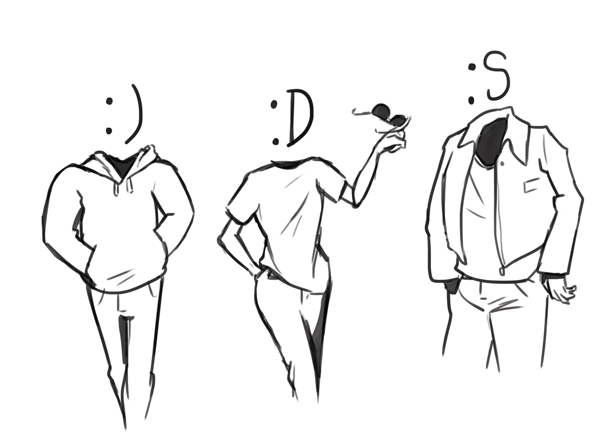By Dessa Bayrock (The Cascade) – Email
Print Edition: March 19, 2014

Which affects you more — a sad expression on your best friend’s face, or the sad-face emoticon your best friend sends you in a text message?
The answer may surprise you: on average, people are beginning to view both in exactly the same way. A happy emoticon might just be a colon and a closed parenthesis, but that simple combination triggers the same chemical reaction in the brain as looking at a happy expression on someone’s face.
The journey of :), :/, :P, and :O began in 1982, when professor Scott Fahlman first used an emoticon as part of an online message board conversation. As email and other text conversations became increasingly common, it became clear that not all parts of physical conversation translated well into text; over 90 per cent of communication is non-verbal, which includes facial expressions, body language, and all those subtle motions you make with your eyes. For the most part, these supplementary messages help us get our points across in everyday conversation, but are lost in a text message.
Think about the difference between these phrases:
Where have you been? :)
Where have you been? :S
Where have you been? :(
Where have you been? :O
Cute combinations of punctuation pepper casual online conversation, and help fill in at least some of the deficit between physical and digital communication.
They do such a good job, Dr. Owen Churches reports, that we now respond to emoticons and physical expressions in nearly the same way. In a recent study, titled “Emoticons in mind: an event-related potential study” in Social Neuroscience, he tracked the way the brain responds to both human expressions and their emoticon counterparts.
“Most of us pay more attention to faces than we do to anything else,” Churches told ABC Science. “We know experimentally that people respond differently to faces than they do to other object categories.”
As part of the study, Churches and his team showed pictures of faces and a variety of emoticons. Watching the electric activity in the brain, they were able to compare reactions. On average, the reaction was the same for both face and emoticon, but only when the emoticon read left to right. Scientifically speaking, :) looks like a face, but (: just looks like punctuation.
The human brain learns to recognize faces at a young age, and automatically notes the position of eyes, nose, and mouth to identify other people and their expressions. This is an automatic response to its surroundings, and after enough exposure the brain learns to identify emoticons in the same way.
“Before 1982 there would be no reason that ‘:-)’ would activate face sensitive areas of the cortex but now it does because we’ve learnt that this represents a face,” Churches told ABC Science. “This is an entirely culturally-created neural response. It’s really quite amazing.”

